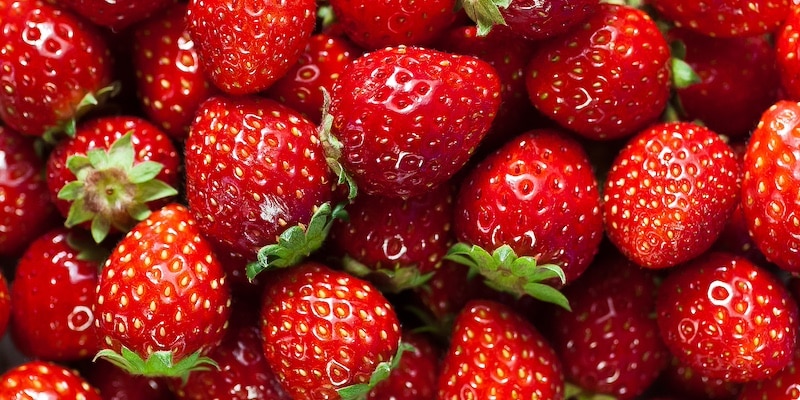by Melissa Chichester
Coenzyme Q10 (Co Q-10) is a compound that plays a crucial role in energy production within our cells and provides antioxidant properties.*
While our bodies naturally produce Co Q-10, its levels may decline with age. Incorporating Co Q-10 foods into your diet is an excellent way to ensure you’re getting enough of this essential nutrient.
Co Q-10, also known as ubiquinone, is a fat-soluble substance present in every cell of the body. It is particularly abundant in the heart, liver, kidneys, and pancreas.
Co Q-10 is involved in the production of adenosine triphosphate (ATP), the molecule that stores and transfers energy within cells. Besides its role in cellular energy production, Co Q-10 also helps other enzymes do their jobs, creating a chain reaction that influences other parts of the body, including the heart.*
1. Organ meats
Organ meats like liver, kidney, and heart are dietary sources of Co Q-10. They also provide high amounts of essential vitamins and minerals, such as B vitamins. The foods below might not be what you typically eat, but for those with an adventurous side, they’re a great way to increase Co Q-10 intake.
How to incorporate:
2. Fatty fish
Fatty fish such as salmon, mackerel, sardines, and tuna are sources of Co Q-10. These fish also contain omega-3 fatty acids, which offer additional cardiovascular benefits.*
How to incorporate:
3. Muscle meats
Beef, pork, and chicken also contain Co Q-10, particularly in the muscle tissues.
How to incorporate:
4. Whole grains
Whole grains like oats, bran, and whole wheat are also sources of Co Q-10 and provide fiber, vitamins, and minerals.
How to incorporate:
5. Nuts and seeds
Nuts and seeds such as peanuts, sesame seeds, and pistachios contain Co Q-10 along with healthy fats, protein, and fiber.
How to incorporate:
6. Legumes
Legumes like peanuts, soybeans, and lentils are plant-based sources of Co Q-10 and also contain protein and fiber.
How to incorporate:
7. Vegetables
Some vegetables, particularly dark green, leafy veggies, contain Co Q-10 too. Broccoli, spinach, and cauliflower are good examples.
How to incorporate:
8. Fruits
Although fruits generally have lower levels of Co Q-10 compared to other food groups, strawberries, and oranges provide some Co Q-10 in addition to Vitamin C and antioxidants.
How to incorporate:

1. Meal planning
One of the most effective ways to ensure you are consuming enough Co Q-10 foods is to plan your meals ahead of time. Incorporate these foods into your weekly menu to enjoy a balanced and nutrient-dense diet. Here’s a basic idea of how you can structure your meal plan:
Make a list of your favorite foods and map out meals and snacks that fit your schedule and lifestyle.
2. Cooking techniques
How you prepare your food can affect its nutrient content. Here are some tips to maximize the Co Q-10 content in your meals:
3. Combine foods
Pairing Co Q-10 foods with healthy fats can enhance the absorption of Co Q-10, as it is fat-soluble. For instance, drizzle olive oil over your spinach salad, or enjoy avocado slices with your grilled salmon.
4. Smart snacking
Keep Co Q-10 snacks on hand to boost your intake throughout the day. Trail mix with nuts and seeds, yogurt with berries, and edamame are convenient options that require minimal preparation.
5. Explore new recipes
Experimenting with new recipes can make incorporating Co Q-10 foods fun and exciting. Try international dishes that naturally include these ingredients, such as Japanese miso soup with tofu and edamame, or Middle Eastern tabbouleh with whole grains and fresh herbs.
Incorporating Co Q-10 foods into your diet is a delicious and natural way to support your overall health. By focusing on a variety of nutrient-dense foods such as organ meats, fatty fish, whole grains, nuts, seeds, legumes, vegetables, and fruits, you can ensure you’re getting an ample supply of Co Q-10 along with other essential nutrients.
If you aren’t getting enough Co Q-10-rich foods into your diet, Co Q-10 supplements are also an option. Always discuss new supplements with your healthcare practitioner.
| * These statements have not been evaluated by the Food and Drug Administration. These products are not intended to diagnose, treat, cure or prevent any disease. |